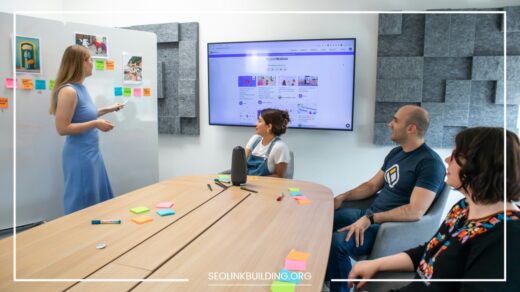Project Planning and Management: The Definitive Guide

Project Planning and Management
Project Planning and Management: The Pillars of Project Success
In today’s dynamic business landscape, where agility and adaptability are key, successful projects are the lifeblood of progress.
Whether it’s launching a groundbreaking new product, streamlining internal operations, or spearheading a social impact initiative, effective project planning and management are the cornerstones of achieving desired outcomes.
This comprehensive guide delves into the world of project planning and management, equipping you with the knowledge and tools to navigate your projects from conception to successful completion.
We’ll explore the following:
- The Fundamentals: Grasping the core concepts of project planning and management.
- The Planning Process: A step-by-step roadmap for crafting a robust project plan.
- Project Management Techniques: Essential tools and methodologies for keeping your project on track.
- Communication and Collaboration: Strategies for fostering a culture of transparency and keeping stakeholders informed and teams engaged.
- Risk Management: Proactive approaches to identifying and mitigating potential roadblocks.
- Project Management Tools: Software solutions to streamline your project workflow and enhance team collaboration.
- Building a High-Performing Project Team: Strategies for selecting the right people and fostering a collaborative environment.
- Project Monitoring and Control: Tracking progress, identifying deviations, and making adjustments to ensure project success.
- Project Closure: Properly finalizing the project and capturing valuable lessons learned.
The Fundamentals: Understanding the Project Landscape
Project planning is the meticulous process of defining the scope, timeline, resources, and budget of a project. It’s about setting clear, achievable goals, meticulously breaking down the work into manageable tasks, and establishing a roadmap for achieving success.
Project management, on the other hand, is the dynamic execution of the plan. It involves overseeing all aspects of the project, ensuring tasks are completed on time and within budget, while adapting to any unforeseen challenges that may arise.
The two work in a symbiotic relationship. A well-defined plan provides the foundation for effective management, while ongoing management activities inform and refine the plan as needed. This continuous loop ensures the project stays on track and delivers the desired outcomes.
The Planning Process: Charting Your Course to Success
Here’s a breakdown of the key steps involved in creating a successful project plan:
-
Define Project Goals and Objectives: Clearly articulate the “why” behind your project. What problem are you solving, or what opportunity are you capitalizing on? Setting SMART goals (Specific, Measurable, Achievable, Relevant, and Time-bound) ensures everyone is aligned on the desired outcome and facilitates progress measurement.
-
Identify Stakeholders: Recognize everyone who has a vested interest in the project’s success. This can include clients, sponsors, internal teams, external partners, and end-users. Engaging stakeholders early on helps manage expectations, secure buy-in, and gather valuable insights. Conduct stakeholder analysis to understand their interests, power levels, and potential influence on the project.
-
Scope Definition: Outline the exact deliverables of your project with meticulous detail. What’s included and what’s not? A well-defined scope prevents scope creep, the uncontrolled addition of features or functionalities that can derail the project timeline and budget. Employ techniques like product breakdown structures (PBS) to systematically define the project’s deliverables and ensure all aspects are captured.
-
Work Breakdown Structure (WBS): Break down the project into smaller, more manageable tasks. The WBS is a hierarchical view, with the overall project at the top, and progressively smaller, more specific tasks branching out below. This allows for clear ownership of tasks, facilitates efficient task scheduling, and enables better resource allocation.
-
Resource Allocation: Identify the people, equipment, materials, and budget required to complete each task. Ensure the necessary resources are available throughout the project timeline. Consider conducting a resource capacity analysis to assess the availability and capabilities of your team members and external resources.
-
Schedule Development: Develop a realistic project timeline using project management tools like Gantt charts or critical path methods (CPM). Consider task dependencies, resource availability, and buffer time for potential delays. Employ techniques like critical path method (CPM) to identify the sequence of tasks that are essential for project completion. Delays in these tasks will directly impact the overall project timeline.
-
Risk Management: Identify potential risks that could derail your project, assess their likelihood and impact, and develop contingency plans to mitigate them. A proactive approach to risk management helps you anticipate and address challenges before they escalate.
-
Communication Plan: Establish clear communication channels between stakeholders, team members, and the project manager. Define communication frequency, preferred methods (e.g., emails, meetings, project management software updates), and who needs to be informed of project updates. Effective communication fosters transparency, builds trust, and allows for collaborative problem-solving.
Project Management Techniques: Your Toolkit for Success
Once your plan is in place, various project management techniques can help you stay on track and navigate the project lifecycle effectively. Here’s a look at some essential tools and methodologies:
-
Agile Methodology: An iterative and flexible approach that breaks projects into smaller phases called sprints. Each sprint focuses on delivering a specific set of features or functionalities. Regular feedback loops allow for continuous adaptation to changing requirements, making it ideal for projects with evolving needs.
-
Waterfall Methodology: A traditional, linear approach where each phase of the project (e.g., requirements gathering, design, development, testing) must be completed sequentially before moving on to the next. This method works well for projects with well-defined requirements that are unlikely to change significantly.
-
Project Management Software: Utilize a variety of project management software solutions like Asana, Trello, Microsoft Project, or Monday.com to manage tasks, track progress, collaborate with your team, and visualize project data. These tools can streamline communication, improve efficiency, and enhance team productivity.
-
Gantt Charts: Visualize the project schedule in a bar chart format, including task dependencies and deadlines. This provides a clear overview of the project timeline and helps identify potential bottlenecks.
-
Critical Path Method (CPM): This technique identifies the sequence of tasks that are essential for project completion. Delays in these critical tasks will directly impact the overall project timeline. By focusing on managing critical path tasks effectively, you can ensure the project stays on schedule.
-
Program Evaluation and Review Technique (PERT): Similar to CPM, PERT helps estimate project timelines by considering three time estimates for each task: optimistic, most likely, and pessimistic. This approach provides a more nuanced understanding of potential schedule variations.
-
Kanban Boards: Utilize Kanban boards to visualize workflow stages (e.g., To Do, In Progress, Done). Tasks are represented by cards that move across the board as they progress through different stages. This method is particularly effective for agile projects and helps teams visualize bottlenecks and optimize workflow.
By selecting the appropriate techniques and combining them strategically, you can create a robust project management framework that caters to the specific needs of your project.
Building a High-Performing Project Team: The Pillars of Success
The cornerstone of any successful project is a high-performing team. Here’s how to assemble and empower your project team:
-
Skills and Experience: Carefully select team members who possess the necessary skills and experience for the project tasks. Consider technical expertise, soft skills like communication and collaboration, and project management experience.
-
Team Roles and Responsibilities: Clearly define individual roles and responsibilities within the team. This ensures everyone understands what’s expected of them and avoids confusion or duplication of effort.
-
Teamwork and Collaboration: Foster a collaborative environment where team members feel comfortable sharing ideas, supporting each other, and working towards common goals. Utilize team-building exercises and encourage open communication to build trust and camaraderie.
-
Diversity and Inclusion: Assemble a diverse team with a variety of perspectives and backgrounds. Diversity of thought can lead to more creative solutions and innovative approaches to problem-solving.
-
Motivation and Recognition: Keep your team motivated by setting achievable goals, providing regular feedback, and recognizing their accomplishments. Celebrate successes along the way to boost morale and maintain a positive team spirit.
Investing time and effort into building a strong team is crucial for project success. By selecting the right individuals, fostering a collaborative environment, and keeping them motivated, you create a foundation for exceptional project outcomes.
Project Monitoring and Control: Keeping Your Project on Track
Project monitoring and control involve continuously tracking project progress, identifying deviations from the plan, and taking corrective action as needed. Here are some key strategies:
-
Performance Measurement: Establish key performance indicators (KPIs) to measure progress towards project goals. KPIs can be related to schedule, budget, scope, quality, and risk. Regularly track these metrics to identify areas where the project may be veering off course.
-
Earned Value Management (EVM): This technique analyzes project performance by comparing the budgeted cost of work performed (BCWP) with the actual cost of work performed (ACWP) and the scheduled value of work performed (SVWP). Deviations from these values can indicate potential cost or schedule overruns and allow for timely corrective action.
-
Project Management Software Reports: Utilize project management software to generate reports that provide insights into project health, resource allocation, task completion rates, and potential risks. Analyze these reports regularly to identify trends and make informed decisions.
-
Change Management: Be prepared to adapt to changing circumstances or requirements. Develop a change management process to evaluate proposed changes, assess their impact, and implement them effectively with minimal disruption to the project.
Project Closure: Finalizing the Journey and Learning for the Future
Project closure marks the successful completion of a project. It’s not just about wrapping things up; it’s also about capturing valuable lessons learned and ensuring a smooth transition to the project’s deliverables or outcomes. Here’s how to ensure a proper project closure:
-
Project Deliverables: Ensure all project deliverables have been completed, reviewed, and approved by stakeholders. These deliverables may include physical products, reports, documentation, or implemented processes.
-
Project Review: Conduct a comprehensive project review to assess the project’s success against its initial goals. Evaluate factors like scope completion, budget adherence, timeline achievement, and stakeholder satisfaction.
-
Lessons Learned: Capture key learnings and insights gained throughout the project lifecycle. Identify areas for improvement, document best practices, and share these lessons learned with the project team and relevant stakeholders. This knowledge transfer ensures these learnings can be applied to future projects.
-
Project Documentation Archiving: Organize and archive all project documentation, including meeting minutes, plans, reports, and communication records. This information serves as a valuable reference for future projects and historical purposes.
-
Team Recognition and Celebration: Acknowledge and celebrate the team’s achievements. This recognition boosts morale, strengthens team spirit, and fosters a culture of project success within the organization.
By taking the time for a proper project closure, you not only ensure a smooth transition and stakeholder satisfaction but also create a valuable knowledge base for future endeavors.
Final Word: The Power of Effective Project Planning and Management
Project planning and management are fundamental skills for any organization or individual aiming to achieve success. By mastering these skills and employing the strategies outlined in this guide, you can transform your projects from hopeful ideas into tangible results.
Remember, successful project management is an ongoing journey of planning, execution, monitoring, and learning.
By embracing a continuous improvement mindset and adapting your approach based on experience, you can consistently deliver exceptional project outcomes and propel your organization forward.













